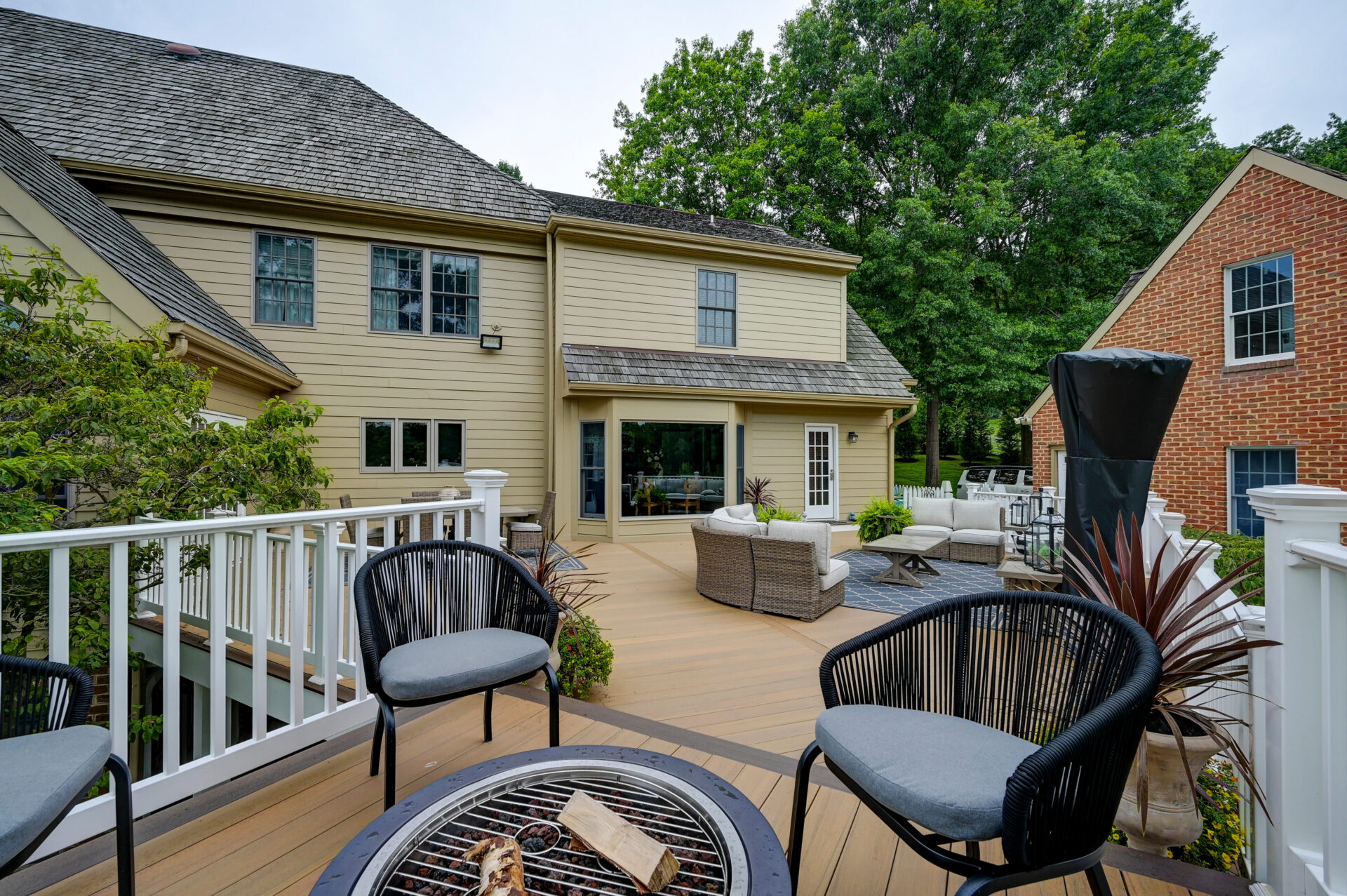As outdoor living grows in popularity and more homeowners seek functional spaces, installing a deck has become a practical addition to any home. It provides an inviting area for entertaining guests and enjoying the great outdoors. However, constructing a deck requires careful consideration, particularly in choosing the right material.
With several deck material options available, choosing the right one can be a daunting task. In this blog, we’ll compare some of the most popular options and discuss key factors to consider.
Different Deck Material Options
Each deck material has its own set of pros and cons. Here’s an overview of the most popular options:
1. Wood
Wood is the most popular decking material for a good reason. It exudes warmth, character, and natural beauty, adding a timeless appeal to any outdoor space. Moreover, it is often more budget-friendly than other materials, making it an attractive option for cost-conscious homeowners.
That said, wood decks require regular maintenance to ensure longevity. This involves staining or sealing to protect against moisture, rot, and insect damage. Certain wood species may also be more susceptible to splintering, warping, and cracking over time, requiring frequent upkeep.
2. Composite
A composite deck is a popular alternative to wood, offering the look of natural timber without rigorous maintenance requirements. It is made of recycled wood fibers and plastic, making it more resistant to rot, mold, mildew, and insect infestation. This material is also available in various colors and styles, so you can find the perfect match for your home.
Composite decking can be more expensive than wood and may be prone to scratching. Walking barefoot in hot weather may also be uncomfortable due to its tendency to retain heat. Therefore, a composite deck is more suitable for areas not exposed to direct sunlight. It’s also helpful to select soft fixtures and furniture that won’t easily scratch your deck surface.
3. Polyvinyl Chloride (PVC)
PVC decking is made from 100% plastic, boasting exceptional resistance to moisture, mold, and insects. It’s also highly durable and low maintenance, requiring only occasional cleaning. This material is available in a range of colors and finishes, allowing homeowners to personalize their outdoor space. Also, its fade-resistant properties make it ideal for sun-drenched areas.
While PVC decking tends to be more expensive than wood and composite materials, its resistance to stressors makes it a worthy investment. Note that it may expand and contract with temperature changes, possibly causing warping or sagging over time. So, it’s best suited for areas with less extreme weather or climate conditions.
4. Aluminum
Aluminum is the most durable deck material option, with an average lifespan of 50 years or more. It is resistant to rot, rust, insect damage, and fire, making it an excellent choice for coastal areas and places prone to wildfires. Moreover, aluminum is endlessly recyclable, making it a sustainable alternative for homeowners.
That said, aluminum may come with a higher price tag. An aluminum deck should also be positioned away from direct sunlight, as its surface easily becomes hot due to the material’s high thermal conductivity. While it offers good traction, it can be slippery when wet, but this can be mitigated with a non-slip coating or mats in high-traffic areas.
Factors To Consider When Choosing a Deck Material
Several factors should be considered to ensure you choose the most suitable deck material option for your needs:
Budget
Evaluate the initial cost of the material, as well as long-term maintenance expenses. While some materials may have a higher initial cost, they might require less maintenance over time, potentially saving you money in the long run.
Location and Climate
Assess the environmental conditions of your deck’s location, including exposure to moisture, direct sunlight, temperature fluctuations, and insect infestations. Choose a material that is suitable for your climate and can withstand the elements to ensure durability and longevity.
Aesthetics
Consider the appearance of the material — including color and style — to ensure it complements your home’s architecture and personal style preferences. Select a material that enhances the overall aesthetic appeal of your outdoor space.
Maintenance
Consider the maintenance requirements of the material you choose. For instance, if regular upkeep and cleaning do not align with your lifestyle and preferences, it may be more practical to select PVC or aluminum decking.
Trust Clarksville Construction Services for Expert Deck Design and Building Services!
Clarksville Construction Services is a reputable contractor for professional deck design and building services in the Baltimore and eastern shore areas! We only use the best deck material options — from high-performance composites like Azek and Timbertech to top-quality wood products. Our team of experienced professionals will work with you to choose the right material and design a deck that meets your needs and budget.
Contact us today and let us help you create the perfect deck for your home!





